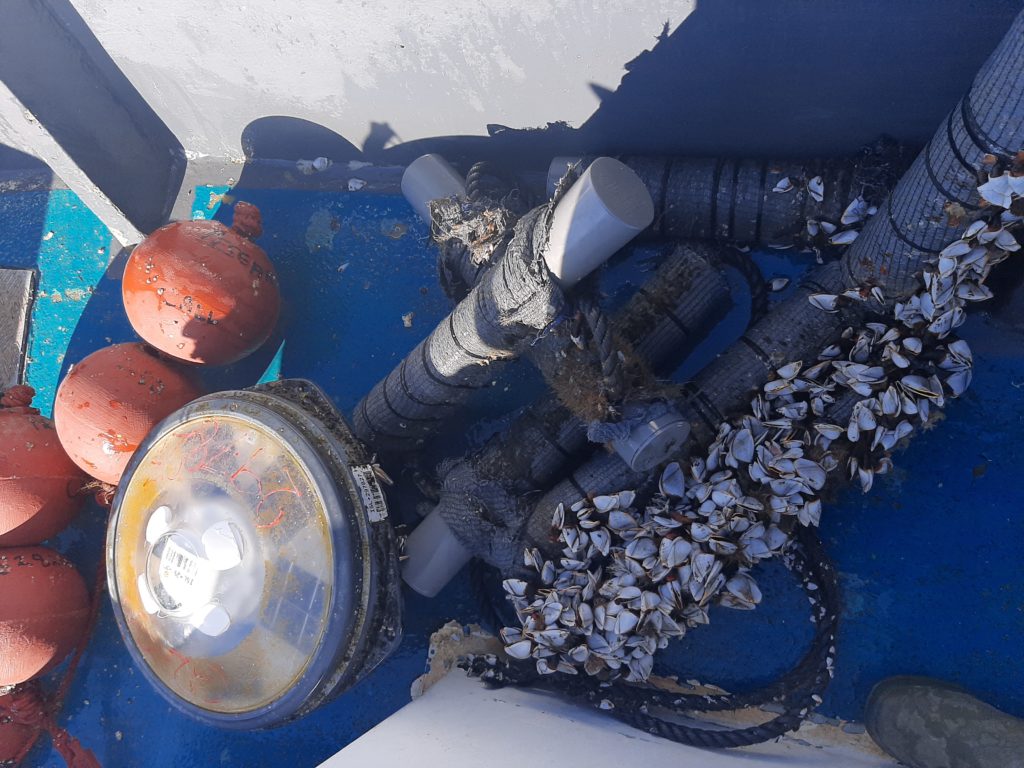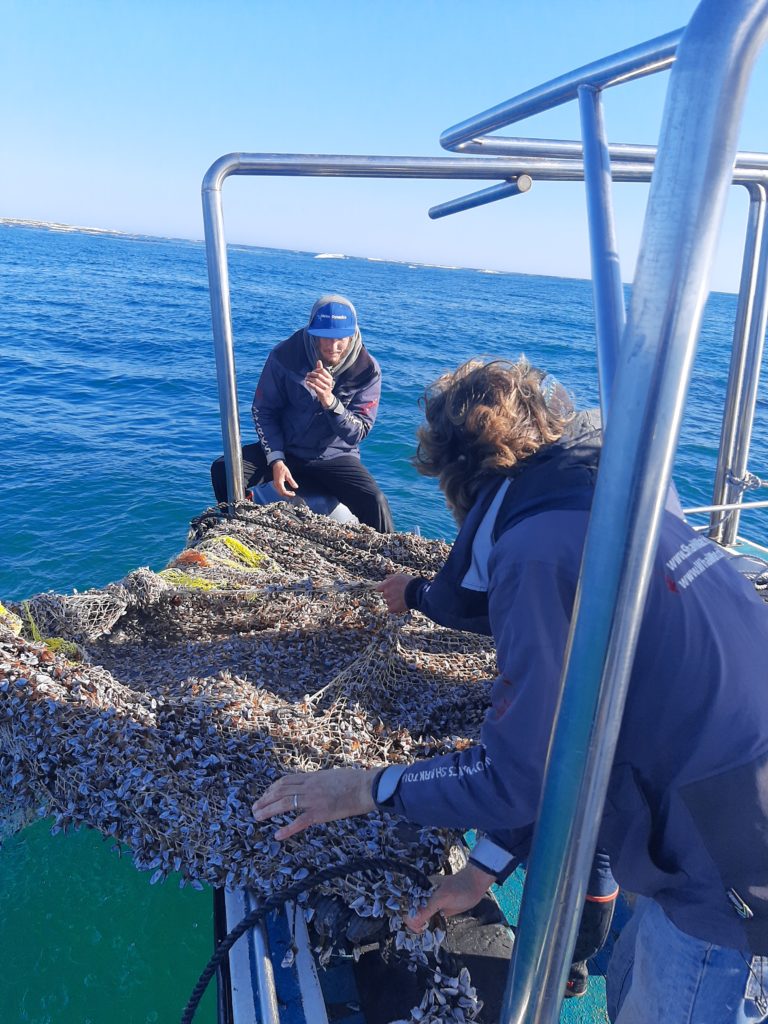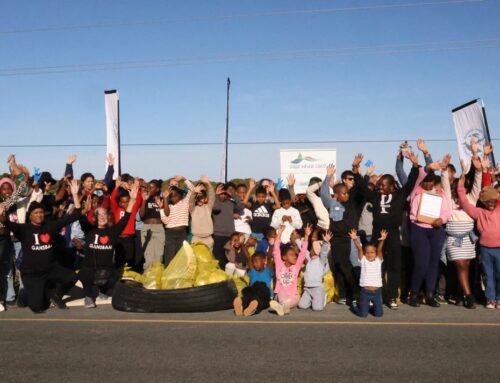During a recent research trip, our biologists and crew picked up a large object floating in the waters near Dyer Island. This object turned out to be what is known as a FAD – a Fish Aggregating Device – that is used by various fisheries to attract target species such as tuna, marlin and sharks. This huge square grid with large netting attached below was floating a few meters below the water surface, with a large transponder attached and seen on the surface. FADs are used by fisheries to create a mini-ecosystem floating just below the surface, providing food and protection for a variety of fish species. Once the FAD has created enough of a biomass, fishing vessels will approach and using massive nets, catch the accumulated fish species, often with huge amounts of bycatch, including sharks, turtles and juvenile fish. This fishing method is not legal in South Africa. However, quite a few of these devices have been found washed up on South African shores, likely from neighbouring countries. Based on the large amount of biofouling, it had been in the water for a very long time and was likely to have blown into the Kleinbaai area during the recent storm.
However, this highlights the presence of ghost-gear in our waters, abandoned, lost or otherwise discarded fishing gear. With whale season in South Africa, this gear creates a hazard for the southern right whales, humpback whales and Bryde’s whales that frequent this area. The research team recovered the gear and brought it back to shore for it to be properly discarded. This highlights the importance of daily monitoring of the Marine Dynamics/Dyer Island Conservation Trust team.








